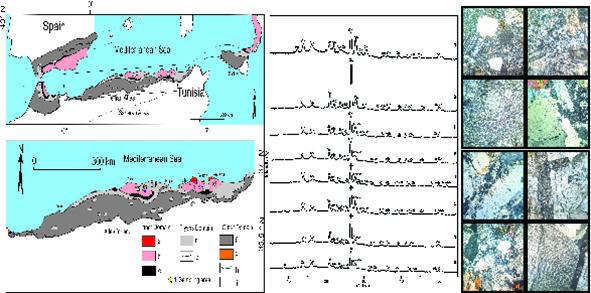Evaluation of some granitic rocks of the Algerian coast as a source of feldspar raw material
DOI:
https://doi.org/10.13133/2239-1002/18324Abstract
Feldspar, a mineral group found in the Earth’s crust, is crucial for the glass and ceramics industries. Traditionally extracted from pegmatites, it is now increasingly extracted from various deposits, predominantly alkaline and high calc-alkaline granitic rocks. Despite the significant global demand for feldspar and Algeria’s rich reserves and diversity of feldspar-bearing rocks, the country has yet to fully exploit these resources. Among the magmatic formations of Algeria, there are numerous high calc-alkaline granitic rocks. Petrographic studies have classified these rocks into granite, microgranite, and pegmatite, each consisting predominantly of potassium feldspar (orthoclase and microcline), plagioclase feldspar (albite and andesine), quartz and micas (biotite and muscovite), with hematite as a minor component. Secondary minerals such as sericite, calcite, and chlorite were identified, and X-ray diffraction studies also revealed the presence of additional secondary minerals, namely smectite and kaolinite. Geochemical analysis indicated sodium oxide (Na2O) content ranged from 2.61 to 4.91 wt%, averaging 3.45 wt%, potassium oxide (K2O) from 3.40 to 5.11 wt%, averaging 4.45 wt%, iron (III) oxide (Fe2O3) from 0.34 to 3.08 wt%, averaging 1.68 wt%, and titanium dioxide (TiO2) from 0.02 to 0.37 wt%, averaging 0.17 wt%. These chemical profiles highlight the high calc-alkaline nature of the rock bodies with a low magnetic phase content and position these Massifs as promising feldspar reserves.

Downloads
Published
Issue
Section
License
Copyright (c) 2024 Periodico di Mineralogia

This work is licensed under a Creative Commons Attribution 4.0 International License.

